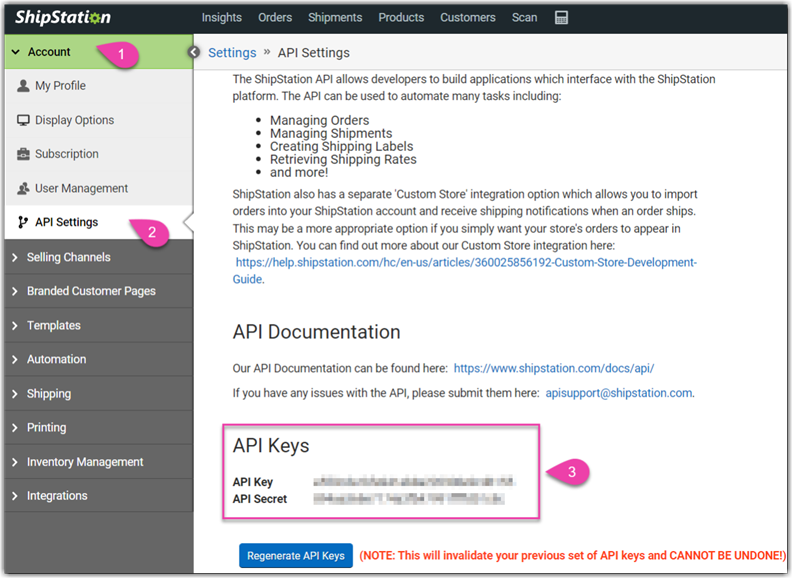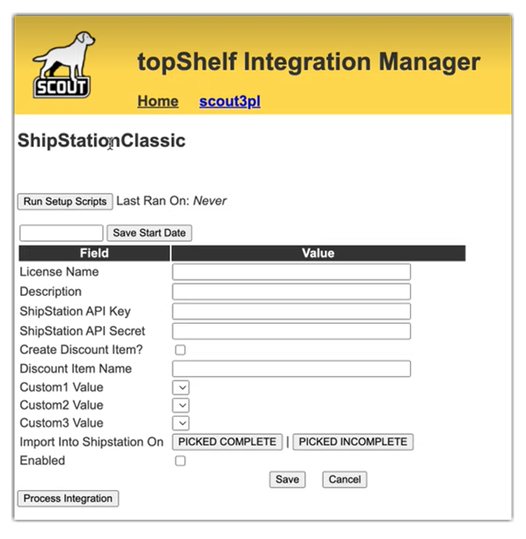ShipStation Classic Setup
ShipStation Classic Setup
Step 1: Retrieve API Key and API Secret from ShipStation
Login to your ShipStation account and go to Account > API Settings > API Keys. Then, copy the API Key and API Secret to use for the integration setup detailed below.

Step 2: Set up integration
- To access the Warehouse Manager Integration Manager, log in to integrations.scoutsft.com.
- Once logged in, click Add ShipStation Classic License to open the setup page.

Note** If the button is not visible and you purchased the ShipStation integration, please contact your CSM (Customer Success Manager) or support@scoutsft.com.
To get started, click Run Setup Scripts. This will add new fields to Warehouse Manager that are required to pull information from ShipStation.
Enter the start date (MM/DD/YYYY) that you want to begin pushing orders to ShipStation, then click Save Start Date.
Next, enter the values for the integration settings. Each field is further detailed below:
License Name: The primary identifier for the connection (it is recommended to include the software you are integrating with and the name of the customer—e.g., “ShipStation for Company XYZ”
Description: Secondary identifier that notes any additional information you want to include for the connection
ShipStation API Key: Unique value obtained from your ShipStation API settings (as reviewed above)
ShipStation API Secret: Unique value obtained from your API settings (as reviewed above)
Create Discount Item?: If checked, this creates an additional order line item for the discount (e.g., could be used on a packing list in ShipStation)
Discount Item Name: What line item will be named for the discount in ShipStation (e.g., “Discount”)
Custom 1–3 Values: Customized values you can map from Warehouse Manager to ShipStation
- MarketPlaceName: Name of the e-commerce marketplace used (e.g., Shopify or Amazon)
- “Sent from topShelf”: Text field that indicates the order was sent from Warehouse Manager
- WaveNumber: Identifies the pick wave number for multiple orders that are picked in batch
- PickStatus: Indicates the status of the order in Warehouse Manager
- MasterDocNumber: Allows you to link orders with one another if needed
- CustomerPO: Purchase order number identified on the order
- StoreName: Specific name of the e-commerce store (e.g., Adam’s store, Bike Unlimited)
- CartName: Identifier when cart is used to pick order
- DocumentID: An order key linked to each order number that is not visible to ShipStation’s interface
- DocNumber: Order number in Warehouse Manager
- ToteName: Identifier when tote is used to pick order
- FromLocationName: Location name of the warehouse where the order is coming from
Import to ShipStation On: Indicates which Warehouse Manager order statuses to push to ShipStation
Enabled: Must be checked to enable the integration
